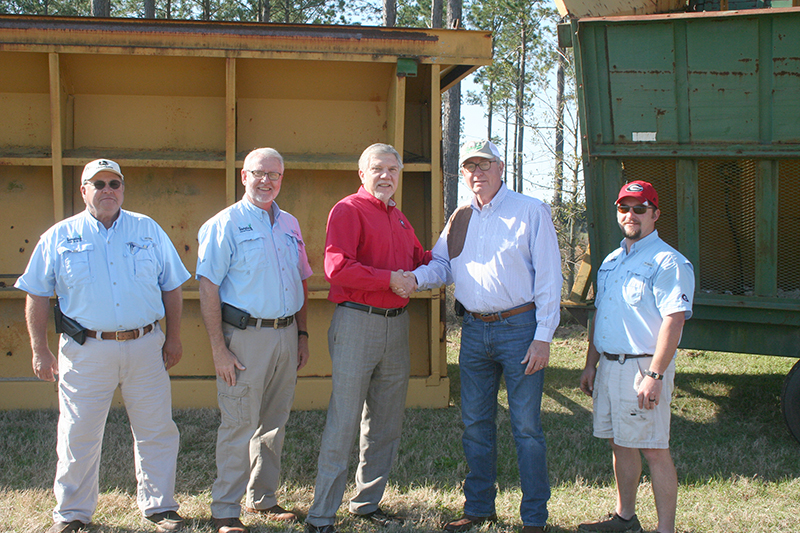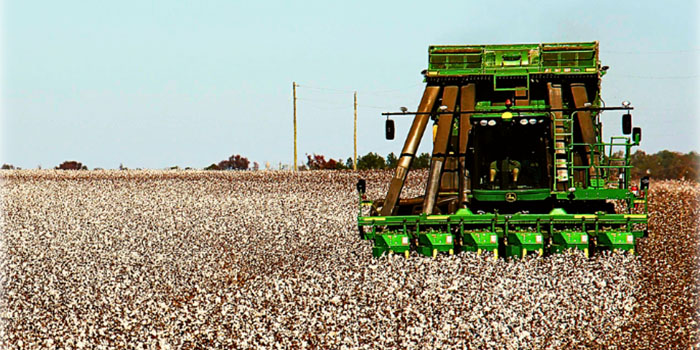A south Georgia cotton gin is helping the University of Georgia’s C.M. Stripling Irrigation Research Park (SIRP) harvest cotton more efficiently thanks to their donation of a cotton module builder and cotton boll buggy.
Funston Gin, in Funston, Georgia, donated the two pieces of equipment, valued at $25,000, last harvest season to help the park harvest its cotton plots in the fall. SIRP Superintendent Calvin Perry said the module builder and boll buggy are welcome additions to the park’s inventory, especially given the amount of cotton research conducted at SIRP every year.
“When you deal with plots like we do, you may pick some for Dr. (John) Snider today and, in two days, you may pick some for Dr. (Wes) Porter. We just needed a way to better handle cotton between researchers,” Perry said.
SIRP enables the study of irrigation effects on various crops, including cotton, peanuts and corn. Perry said that last year, the park devoted 25 acres to cotton research. Those 25 acres were divided into hundreds of different plots that contained the research of different scientists within UGA’s College of Agricultural and Environmental Sciences.
In previous years, the park used trailers to handle the harvested cotton. Perry said that most current cotton gins are not set up to handle trailers; this led to the need to switch to more modern cotton-handling equipment. Funston Gin has been ginning the park’s cotton for many years. Owner Tom Stallings was eager to aid UGA in cotton research.
“It’s a great pleasure to be able to help them. I fully intend to solicit my other cotton partners in the ginning industry and production industry to see if we can’t get more money into researching cotton,” Stallings said.
The cotton picker dumps the cotton into the boll buggy trailer after moving through the field. The picked cotton is then transferred into the module builder, a big, rectangular mechanism that presses the picked cotton into big bundles. This allows gin truckers to haul the harvested crop easily from the field.
“If we’re waiting a couple of days for a scientist’s plots to be ready, we can let the cotton sit in that boll buggy for a few days under a shelter without having to put it into a module builder and run the risk of having rain get on it. It gives us some handling flexibility that’s very useful,” Perry said. “It definitely serves our needs quite well.”





